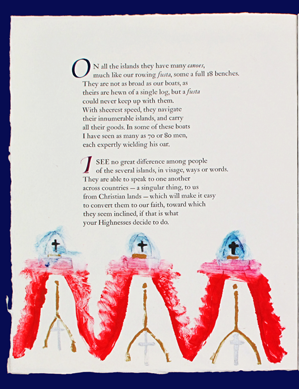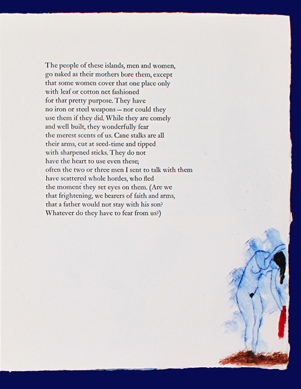The three religious forms in the page on the left are references to Columbus’ devotion to Christianity and his personal motivation in undertaking his voyages of discovery. In his correspondence with the king and queen of Spain, Columbus clearly communicated his goal of using any profits from his journey to fund the recapture of Jerusalem. Columbus also wrote to Pope Alexander VI, stating that he hoped his journey would be “great and magnifying for the glory and growth of the Holy Christian religion.” According to Columbus’ text, the indigenous inhabitants of the Indies seem interested in Christianity and will be easily converted, foreshadowing the major missionary efforts of the following century. These figures most likely represent cardinals, due to their red attire and the crosses on their vestments.
The image of a nude blue woman on the bottom right of the facing page displays an idealized, graceful form. She leans her body over in a curved pose and washes herself with a red cloth. Women appear frequently in the art documenting early America, both as allegorical figures and as sexualized inhabitants of the New World. The woman here is shown with pubic hair, although representations of nudes from the early modern period only rarely include it. This may be a reference to her role as an Eve-like figure, innocent and feeling no shame; she has not yet been corrupted. Stylistically this image may be connected to both Degas’ monotypes of female nudes, although her role here as a primitive Eve connects her even more directly to the Tahitian women painted by Paul Gauguin in the late 19th century.


